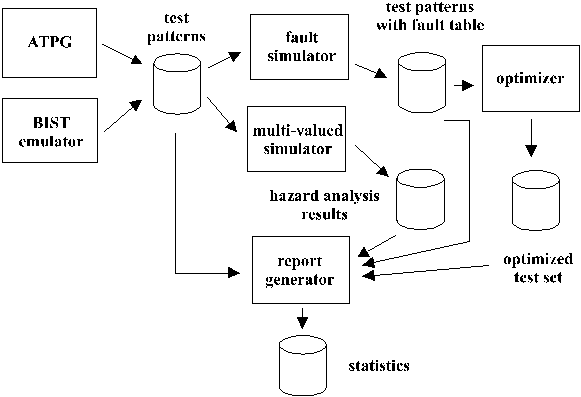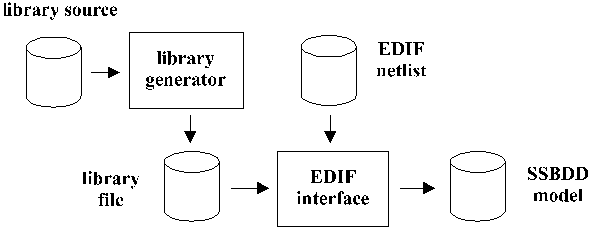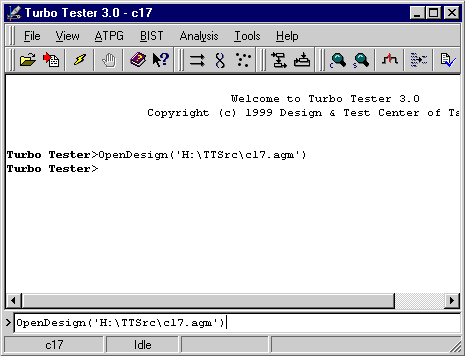
Figure 1. Dataflow
Figure 1 presents the data flow of Turbo Tester system. The system consists of tools for Automatic Test Pattern Generation (ATPG), Built-In Self-Test (BIST) emulation, fault simulation, test set optimization and multi-valued simulation. For test pattern generation and BIST emulation, different methods can be applied. These include deterministic, random and genetic test generation, and BILBO (Built-In Logic Block Observer) and CSTP (Circular Self-Test Path) emulation. With the aid of Turbo Tester report generator statistical data about the results of different tasks can be extracted.

Figure 1. Dataflow
In Figure 2 the design interface of Turbo Tester system is given. It is a powerful EDIF interface, which links the system to most of the commertial VLSI CAD tools, including Synopsys, Cadence, mentor Graphics, ViewLogic, Compass, ASYL+, OrCAD, and many others. The interface requires corresponding target technology library file, which can be created by Turbo Tester library generator. In addition, a set of technology libraries are provided with the installation.

Figure 2. Design Interface
All the tools inTurbo Tester system operate on the design model of Structurally Synthesized BDDs. SSBDDs are special case of Binary Decision Diagrams (BDDs). However, unlike BDDs, SSBDDs are capable of representing gate-level faults.
In Turbo Tester, two possible options for generating SSBDDs exist:
In the case of gate-level SSBDDs, each gate is represented by corresponding BDD and the circuit model does not differ from ordinary gate-level model.
 Diagnostic algorithms run
slower on the gate-level model than on the macro-level. Therefore, in order to
achieve better performance, macro-level model sould be chosen. However, if
noncollapsed gate-level fault coverage is required, gate-level model can be
selected instead.
Diagnostic algorithms run
slower on the gate-level model than on the macro-level. Therefore, in order to
achieve better performance, macro-level model sould be chosen. However, if
noncollapsed gate-level fault coverage is required, gate-level model can be
selected instead.
Figure 3 depicts the user interface of Turbo Tester 3.0 on Windows platform.

Figure 3.
Turbo Tester Graphical User Interface (GUI)
Turbo Tester 3.0 uses standard Windows 95/NT User Interface with components familiar from other products. It is consisting of menu bar, several toolbars, console, command prompt and a status bar. Menubar, toolbars and status bar are common to almost all Windows-programs. Console and command prompt are specific to Turbo Tester
UNIX-based TT uses Tcl/Tk for its Graphical User Interface (GUI). It is not as feature-rich as its Windows-based counterpart, but basic functinoality is same.
GUI in both versions acts like a shell or host, executing ordinary command-line tools under its control. These tools can also be used separately from the GUI by running them from ordinary DOS/Windows/UNIX shell's command prompt.
For more information on how to use and configure the GUI, refer to Using Graphical User Interface section of this manual.
Copyright © 1999 Design & Test Center